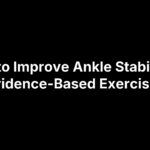Custom orthotics are prescription shoe inserts molded to your exact foot shape. You can get them through a podiatrist—often with insurance help—or from consumer brands online, and you can expect to pay about $200 to $800 a pair. In return, they ease pain, correct alignment, and stay supportive for years when cared for properly.
If flimsy gel pads from the drugstore still leave you aching, this guide is for you. We’ll compare prescription and over-the-counter options, outline the conditions orthotics can relieve, walk you through casting, costs, insurance, and upkeep, and help you pick a provider—whether that’s an online kit or a biomechanical work-up at a podiatry clinic.
What Exactly Are Custom Orthotics?
Think of custom orthotics for feet as tiny pieces of engineering that live inside your shoes. A podiatrist captures a three-dimensional mold of each foot, then writes a prescription that tells a lab how stiff, how soft, and how thick every millimeter should be. The finished device redistributes pressure, guides the way your heel strikes and your toes push off, and absorbs shock so knees, hips, and back don’t have to. Early versions were carved from plaster casts; today they’re designed with CAD software and milled or 3-D printed within days.
Prescription vs Over-the-Counter Inserts
- Custom: built from your scan or cast, choice of shell material, adjustable after delivery, lifespan 2–5 years.
- OTC: mass-produced foam or gel, one shape fits many, helpful for mild soreness or travel emergencies, usually compresses within 3–6 months.
Functional vs Accommodative Orthotics
- Functional (semi-rigid): correct motion errors like over-pronation, popular for plantar fasciitis and athletic performance.
- Accommodative (soft, multi-density): off-load pressure points for diabetes, arthritis, or painful calluses. Some prescriptions blend both styles.
Materials and Manufacturing Technologies
- Shells: polypropylene for everyday wear, carbon fiber for thin yet stiff sports models, EVA for kids who outgrow sizes quickly.
- Top covers: leather for durability, neoprene for cushion, antimicrobial fabrics to fight odor.
- Processes: heat-molding, CNC milling, and rapid 3-D printing allow micron-level tweaks and faster turnarounds.
Foot and Lower-Body Problems Custom Orthotics Can Address
Custom orthotics for feet act like tiny engineers, redirecting ground forces so joints and soft tissues stop protesting. Below are the most common issues a well-written prescription can calm—or even prevent.
Plantar Fasciitis and Chronic Heel Pain
Deep heel cups and reinforced medial arches cut fascia tension, while a slight forefoot rocker spreads push-off load. Many patients notice morning-step relief within days of consistent wear.
Flat Feet and High Arches
For low arches, posted wedges limit over-pronation; for cavus feet, extra midfoot padding absorbs shock that normally ricochets up the leg. Either way, gait becomes smoother and less tiring.
Diabetic Foot Complications
Multi-density layers “off-load” bony prominences, trimming peak pressures that trigger ulcers. Soft top covers reduce shear, and removable spacers accommodate swelling throughout the day.
Sports Injuries and Overuse Syndromes
Running shin splints, Achilles strain, even stress fractures respond to devices that tune limb alignment and store a bit of rebound energy. Athletes report fewer flare-ups and quicker recovery mileage.
Knee, Hip, and Lower-Back Alignment Issues
When the rearfoot sits level, the tibia, femur, and pelvis stack better. Studies link custom devices to reduced patellofemoral pain and less lumbar fatigue during prolonged standing or walking.
Benefits and Considerations of Going Custom
If you’re weighing the value of custom orthotics for feet, balance the promised relief against the practical realities. The devices can be game-changing, but they aren’t magic slippers. Use the points below to decide whether a prescription pair fits your lifestyle, budget, and long-term goals.
Pain Relief and Improved Biomechanics
Targeted posting can unload peak pressures by up to 30 %, smooth timing between heel strike and toe-off, and calm inflamed tissues. Many wearers notice gentler landings and fewer morning twinges within two weeks of daily use.
Injury Prevention and Athletic Performance
Balanced foot mechanics reduce the torque that creeps into shins, knees, and hips. Clinical audits of runners fitted with prescription inserts show injury rates falling by roughly 28 % season over season.
Long-Term Cost Savings vs Replacing Generic Insoles
Replacing $40 pads each quarter drains $160 yearly, while a $500 custom pair that lasts four years averages $125 per year—often with free refurbish visits.
| Option | Up-front Cost | Avg. Yearly Cost* |
|---|---|---|
| Drug-store insoles (4×/yr) | $40 × 4 | $160 |
| Custom pair (4-yr life) | $500 | $125 |
*Before insurance reimbursement.
Potential Drawbacks and Adaptation Period
Plan on a gradual break-in—add about an hour of wear each day. Some shoe styles feel cramped, and inserts never replace stretching or strength work, so keep your rehab routine alive.
The Custom Orthotics Process Step by Step
Ordering custom orthotics isn’t mysterious—it’s a four-stop journey that usually spans three to four weeks. First, a clinician studies how your feet behave in real life; next, they capture your exact shape; then a specialty lab builds the devices to prescription specs; finally, you return for fitting and follow-up tweaks. Knowing what happens at each stage helps you ask better questions, budget time, and avoid surprises.
Comprehensive Foot Exam and Gait Analysis
Expect a detailed history, a hands-on joint and muscle screen, and a walking or treadmill video that measures stride length, pronation angle, and pressure points. This data tells the podiatrist what corrections—posting, cushioning, heel cup depth—belong in your prescription.
Capturing Your Foot Shape
Depending on clinic tech you’ll stand in a foam impression box, hold still for a plaster wrap, or step across a 3-D laser scanner. Weight-bearing captures are preferred because they mirror how arches flatten during real-world loading.
Laboratory Fabrication and Quality Control
Your scan files or casts travel to an orthotic lab, where CAD/CAM software mills or prints the shell, adds top-covers, and polishes edges. Technicians check arch height, flex rating, and symmetry before shipping back—turnaround is usually 7–14 days.
Fitting Appointment, Break-In Schedule, and Follow-Up
At delivery the clinician trims for shoe length, verifies that the heel seats flush, and watches you walk again. A one-to-two-week wear-in plan (adding an hour daily) prevents blistering. Most providers offer free adjustments within 60–90 days to fine-tune comfort or posting.
Cost, Insurance, and Budget-Friendly Tips
Sticker shock is common the first time you price out custom orthotics for feet, but a quick breakdown shows where the money goes—and how to keep more of it in your wallet. Below are the numbers, the fine print on coverage, and smart ways to stretch every dollar.
Typical Price Range in the United States
- Podiatrist office: $400–$800 per pair
- Physical therapy/chiropractic clinic: $300–$600
- Direct-to-consumer online kit: $150–$350
Prices usually include the exam, casting, and one adjustment visit.
Factors That Influence Cost
- Shell material (polypropylene vs carbon fiber)
- Single- vs multi-density top covers
- Sport-specific postings or rocker soles
- Provider expertise and in-house gait lab technology
- Add-ons: extra pairs, refurbishing kits, rush shipping
Understanding Insurance Coverage
Many major insurers reimburse a portion when the claim shows medical necessity. Expect to see codes like L3000 or L3020 on your receipt. Coverage typically ranges from 20 % to 100 %, while Medicare pays only for diabetic footwear inserts.
Using FSA/HSA and Potential Tax Deductions
Custom orthotics qualify as an eligible medical expense.
- Save the itemized invoice.
- Submit it through your FSA/HSA portal.
- If you itemize deductions, include unreimbursed costs on Schedule A.
Stretching Your Budget
- Ask about payment plans or 0 % financing.
- Order a second pair during the same mold session for a discount.
- Use refurbish services instead of full replacement every 18–24 months.
- Check if your employer wellness program offers orthotic stipends.
Where to Get Custom Orthotics: Online Brands vs In-Clinic Care
You can order custom orthotics for feet without leaving the couch or by booking an exam with a medical professional. Both routes work—you just need to match them to your needs, budget, and risk tolerance.
Pros and Cons of Direct-to-Consumer Online Services
Convenience and lower prices top the list: mail-in foam kits, video instructions, and turnaround times under two weeks. Downsides include self-impression errors, no gait analysis, and limited post-purchase adjustments.
Advantages of Visiting a Licensed Podiatry Clinic
An in-person visit adds biomechanical testing, pressure mapping, and ongoing tweaks that fine-tune comfort as your activity level changes. Insurance is also more likely to reimburse when a DPM writes the prescription.
Choosing the Right Provider: Checklist
- Board-certified DPM or PT
- Weight-bearing 3-D scanning available
- Transparent pricing and warranty length
- Free adjustment window (30-90 days)
- Positive patient reviews and before/after data
Spotlight on Achilles Foot and Ankle Center’s Orthotic Program
With 13 Central Virginia locations, an advanced gait lab, and same-day urgent slots, Achilles Foot and Ankle Center crafts orthotics that integrate with your overall treatment plan—and they accept most major insurance plans.
Caring for Your Orthotics and Maximizing Their Lifespan
Even the most durable custom orthotics for feet won’t last forever, but a little routine care can easily double their service life while keeping your shoes—and your skin—happy.
Break-In and Monitoring Wear Patterns
Increase wear time by about two hours a day until you reach full-time use. Once a week, flip the inserts over and look for uneven scuffs, bent posts, or thinning padding; early fixes cost less than full replacements.
Cleaning and Odor Control
Hand-wash the top cover with mild soap and lukewarm water, then air-dry overnight—never on a radiator or in direct sun. A light dusting of baking soda or a spritz of 70 % isopropyl alcohol keeps funk at bay.
When to Refurbish or Replace
Athletic pairs usually need refurbishing around 18–24 months; casual or work pairs last three to five years. Cracks, permanent compression marks, or a return of pain are your cue to call the clinic.
Adapting Orthotics to Different Footwear
Keep a second, thinner top cover on hand for dress shoes and cleats. Trim only the forefoot edge with sharp scissors, and always match inserts with shoes that have a firm heel counter and removable insole.
Complementary Habits for Long-Term Foot Health
Orthotics do a lot of the heavy lifting, but daily choices still determine how happy your feet remain over the long haul. Adopt the habits below.
Choosing Footwear That Works with Orthotics
Look for shoes with removable factory insoles, a firm heel counter, and enough depth to keep your toes from rubbing once the orthotic is inserted.
Stretching and Strengthening Routines
Daily calf stretches (3 × 30-second holds), towel curls, and single-leg balance drills maintain flexibility and fire intrinsic muscles your orthotics can’t replace.
Weight Management and Activity Modification
Every extra pound adds roughly four pounds of force at foot strike; gradual weight loss and cross-training keep loads reasonable.
When to Schedule a Re-Evaluation
Book a visit if pain returns, shoes wear unevenly, or you start a new sport—most podiatrists recommend check-ups every 18 months.
Moving Forward with Comfortable, Supported Steps
Custom orthotics are tailor-made shock absorbers and steering wheels for your feet. When prescribed and maintained properly they cut pain, align joints, and last years—often at lower annual cost than a parade of drug-store inserts. You now know the basics: what they are, which problems they solve, how the ordering process, insurance, and at-home care all work. That means the next step is simple—decide where you want to be scanned and fitted.
If you live in Central Virginia and want the confidence of board-certified podiatrists, on-site gait analysis, and insurance-friendly pricing, we’re ready to help. Click here to schedule your appointment and start walking on comfortable, supported steps.






